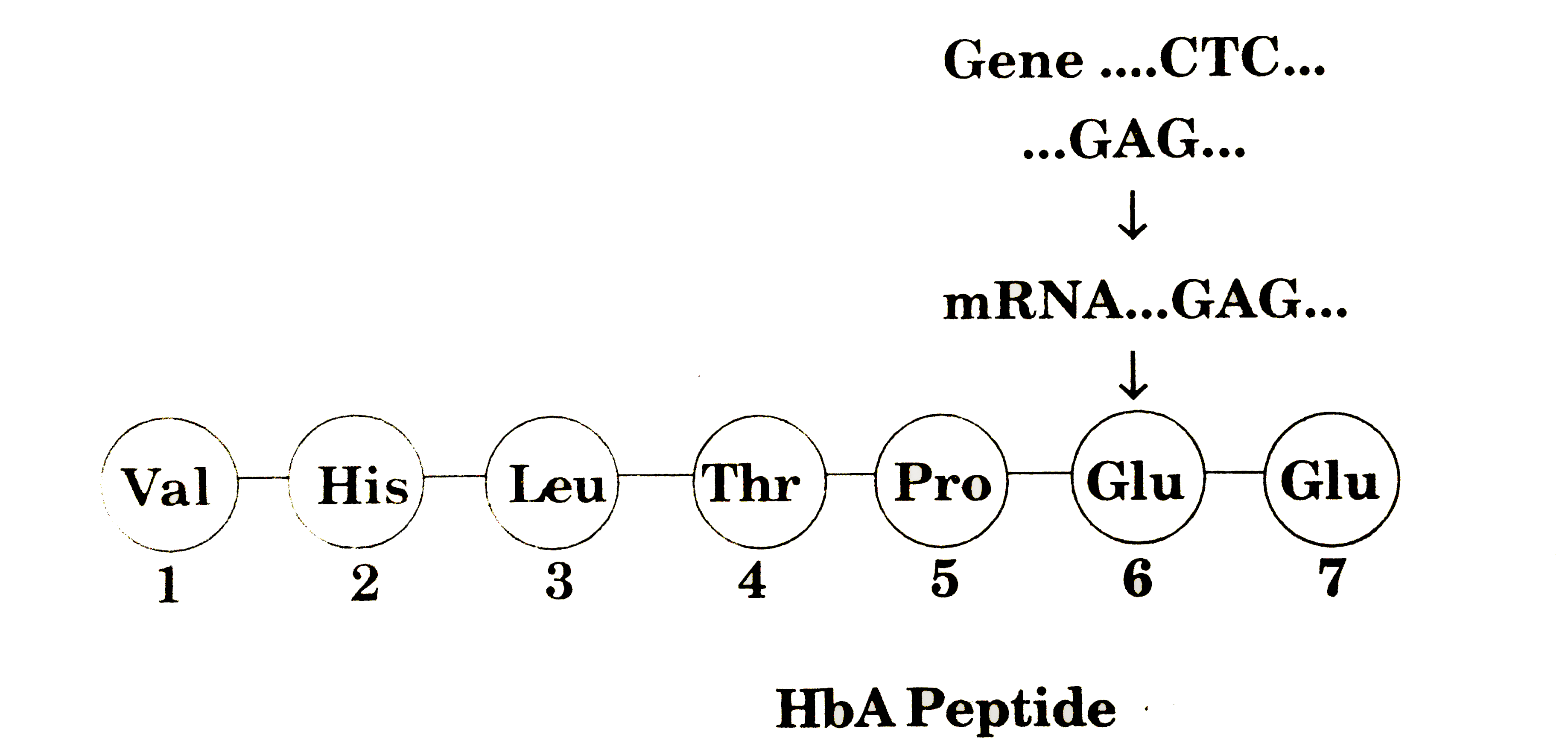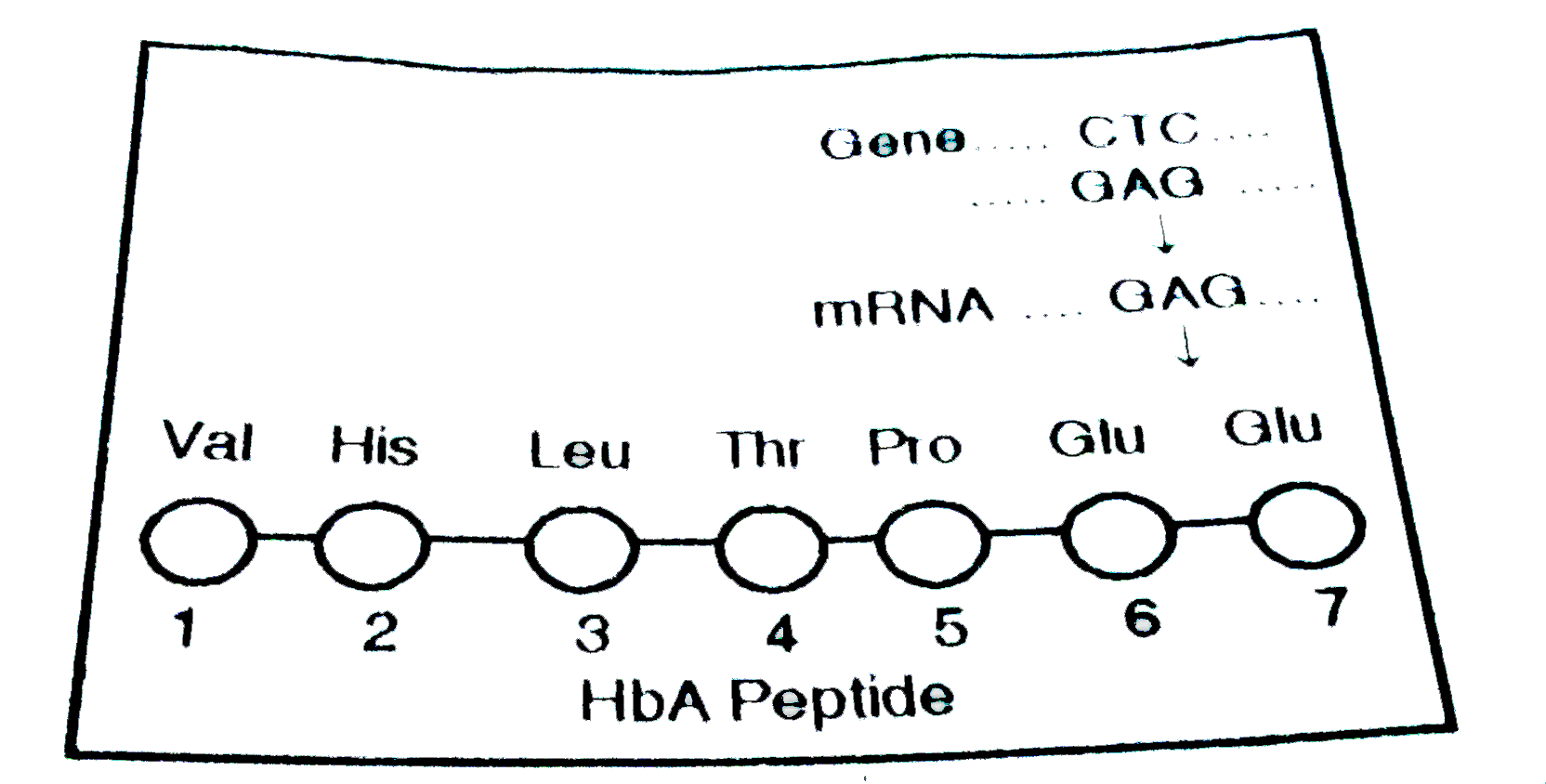(a) Why are colour blindness and thalassemia categorized as Mendelian disorders ? Write the symptoms of these disease seen in people suffering from them.
( b) About 8 % of human male population suffers from colorblindness whereas only about 0.4% of human female population suffers from this disease .Write an explanation to show how it is possible.
Step-by-Step Solution
1. Definition of Mendelian Disorders: Mendelian disorders are genetic disorders that are caused by mutations in a single gene. They follow Mendel's laws of inheritance.
2. Color Blindness:
- Cause: Color blindness is caused by a defect in the genes responsible for the production of photopigments in the cone cells of the retina, specifically affecting the red and green cones.
- Inheritance: It is a sex-linked recessive disorder, meaning the gene responsible for color blindness is located on the X chromosome.
- Symptoms: Individuals with color blindness have difficulty distinguishing between certain colors, primarily red and green. They do not see in black and white but may have trouble with color differentiation.
3. Thalassemia:
- Cause: Thalassemia is a blood disorder caused by a mutation in the genes that control hemoglobin production. It results in reduced synthesis of globin chains that make up hemoglobin.
- Inheritance: Thalassemia can be inherited in an autosomal recessive manner.
- Symptoms: The main symptom of thalassemia is anemia, which is characterized by a reduced level of hemoglobin in the blood, leading to fatigue, weakness, and other related symptoms.
(b) Explanation of the prevalence of color blindness in males versus females.
1. Prevalence Statistics: Approximately 8% of the male population suffers from color blindness, while only about 0.4% of the female population is affected.
2. Sex-linked Nature of Color Blindness:
- Since color blindness is a sex-linked disorder, it is associated with the X chromosome. Males have one X and one Y chromosome (XY), while females have two X chromosomes (XX).
- A male only needs one copy of the defective gene on his single X chromosome to express color blindness.
3. Female Inheritance:
- For a female to be color blind, she must inherit two copies of the defective gene (one from each parent). This means she would need to inherit the color blindness gene from a color-blind father and a carrier or affected mother.
- Consequently, females have a lower chance of being color blind because they need two defective alleles, while males only need one.
4. Conclusion: The difference in the prevalence of color blindness between males and females is due to the fact that males have only one X chromosome, making them more susceptible to expressing the disorder when they inherit the defective gene. In contrast, females can be carriers without showing symptoms unless both X chromosomes are affected.
- Cause: Color blindness is caused by a defect in the genes responsible for the production of photopigments in the cone cells of the retina, specifically affecting the red and green cones.
- Inheritance: It is a sex-linked recessive disorder, meaning the gene responsible for color blindness is located on the X chromosome.
- Symptoms: Individuals with color blindness have difficulty distinguishing between certain colors, primarily red and green. They do not see in black and white but may have trouble with color differentiation.
- Cause: Thalassemia is a blood disorder caused by a mutation in the genes that control hemoglobin production. It results in reduced synthesis of globin chains that make up hemoglobin.
- Inheritance: Thalassemia can be inherited in an autosomal recessive manner.
- Symptoms: The main symptom of thalassemia is anemia, which is characterized by a reduced level of hemoglobin in the blood, leading to fatigue, weakness, and other related symptoms.
- Since color blindness is a sex-linked disorder, it is associated with the X chromosome. Males have one X and one Y chromosome (XY), while females have two X chromosomes (XX).
- A male only needs one copy of the defective gene on his single X chromosome to express color blindness.
- For a female to be color blind, she must inherit two copies of the defective gene (one from each parent). This means she would need to inherit the color blindness gene from a color-blind father and a carrier or affected mother.
- Consequently, females have a lower chance of being color blind because they need two defective alleles, while males only need one.
Similar Questions
Why is thalassemia is categorised as a mendelian disorder? Write the symptoms and explain the cause of disease. How does it differ from sickle-cell anaemia?
View SolutionWhy are thalassemia and hemophilia categorized as Mendelian disorders ?
(a) Write the symptoms of these diseases. Explain their pattern of inheritance in humans.
( b) Write the genotypes of the normal parents producing a hemophilic son.
View Solution
Knowledge Check
The most significant way in which man differs from animals is in the use of written symbols. Alphabets can, therefore, be considered the most momentous invention in the ascent of man. The use of words enables man to master time by preserving for the posterity the best that is seen, experienced or done. The birth of the civilisation was conceived in the making of the alphabet. The knowledge of the alphabet is the first step in the education of man and is central to the whole concept of elementary education. There is an inextricable link between education and progress. South Korea and Afghanistanı provide glaring instances of progressive prosperity and decline through education and lack of education respectively. Education enables people to acquire a greater control over their destiny. Farmers in India, who ushered in the Green Revolution, could do so only after they learned about the high yield of hybrid varieties of wheat and pest resistant varieties of rice. Perhaps, the greatest use of education and knowledge has been made in the field of health and nutrition. Until recently, millions of people died every year, in tropical and sub-tropical countries of the globe, of diarrhoea. However, when they were educated that the simple solution of water sugar and salt can save people from this fatal disease, mortality rate substantially declined. The use of iodized salt has arrested the incidence of goitre throughout the world. A comparative study of the progress of different States in India firmly establishes the mutual dependence of education and development. The infant mortality rate is the lowest in the highly literate state of Kerala, It is very high in low literacy state of Uttar Pradesh. Child mortality fails as mothers leam. Female literacy is, therefore, of the utmost importance in India. Basic information about health and nutrition form an essential part of elementary education. It has been observed that educated mothers are not only able to raise healthier children by following the best and latest child rearing practices, they are also more open to use of contraceptive and mare capable of limiting the number of children. The States of Uttar Pradesh and Bihar are witnessing a population explosion, as they are very slow in removing illiteracy whereas Kerala and Tamil Nadu have been successful in curbing the growth of population through the spread of literacy and creation of awareness about effective methods of contraception. A new dimension has been added to the programme of universalisation of elementary education in India by public interest litigation (PIL) filed by S.P. Anand in the Supreme Court. This PIL seeks to enforce the right to education by obtaining a commitment from all the states and union territories of India that every child will have free and compulsory education till the age of fourteen, as was promised in the Directive Principles of State Policy, as enshrined in the Indian Constitution. Expansion in Primary education and quality improvement of higher education should be adopted as twin aims of our education policy if our country has to join the select group of enlightened and advanced nations.
Hybrid:AblendBmixtureCcross-breedDall of them
The records of a hospital show that 10% of the cases of a certain disease are fatal. If 6 patients are suffering from the disease, then the probability that only three will die is
View SolutionCystic fibrosis is an autosomal recessive disease . In an island having a population of 200 people, 98 people suffer from cystic fibrosis. How many people are carrier of this disease ?
View SolutionName a disorder a human suffers from as a result of monosomy of the sex chromosome. Give the karyotype and write the symptoms.
View SolutionGiven below is the representation of amino acid composition of the relevant translated portion of β-chain of haemoglobin, related to the shape of human red blood cells.

(a) Is this representation indicating a normal human or a sufferer from certain related genetic disease? Give reason in support of your answer.
(b) What difference would be noticed in the phenotype of the normal and the sufferer related to this gene?
(c) Who are likely to suffer more from the defect related to the gene represented the males, the females or both males and females equally? And why?
View SolutionGiven below is the representation of amino acid composition of the relevant translated portion of β-chain of haemoglobin, related to the shape of human red blood cells.

(a) Is this representation indicating a normal human or a sufferer from certain related genetic disease? Give reason in support of your answer.
(b) What difference would be noticed in the phenotype of the normal and the sufferer related to this gene?
(c) Who are likely to suffer more from the defect related to the gene represented the males, the females or both males and females equally? And why?
View SolutionGiven below is the representation of a relevant part of amino acid composition of the β-chain of haemoglobin, related to the shape of human red blood cells.

(a) Is this representation of the sequence of amino acids indicating a normal human or a sufferer from a certain blood related genetic disease ? Give reason in support of your answer.
(b) Why is the disease referred to as a Mendelian disorder ? Explain.
View Solution(a) Write the function of each of the following parts of human eye :
cornea, iris, crystalline lens, ciliary muscles
(b) Millions of people of the developing countries of the world are suffering from corneal blindness. These persons can be cured by replacing the defective cornea with the cornea of a donated eye. A charitable socity of your city has organised a compaign in your neighbourhood in order to create awareness about this fact. If you are asked to participate in this mission how would you contribute in this noble cause ?
(i) State the objective of organising such compaigns.
(ii) List two arguments which you would give to motivate the people to donate their eyes after death.
(iii) List two values which are developed in the persons who actively participate and contribute in such programmes.
View Solution
